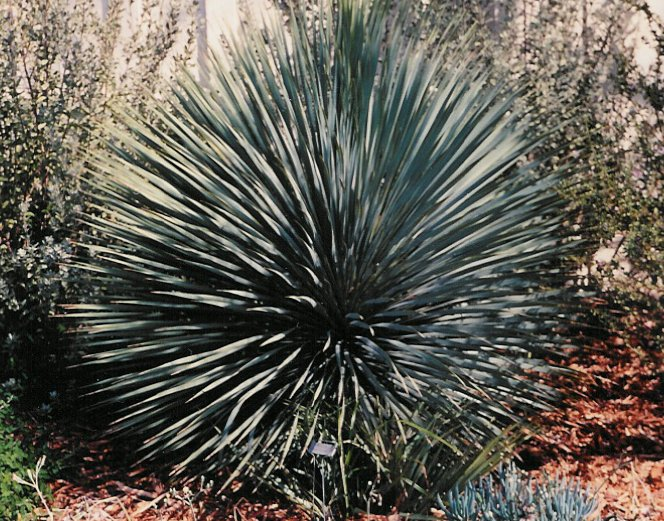| Botanical Name: Yucca rostrata | |
| Common Name: Beaked Yucca |

-
Anatomy
-
Culture
-
Design
Plant Type
Broadleaf Evergreen, Succulent
Height Range
12-25'
Flower Color
White
Flower Season
Summer
Leaf Color
Green, Blue Green
Bark Color
n/a
Fruit Color
n/a
Fruit Season
n/a
Sun
Full, Half
Water
Very Low
Growth Rate
Slow
Soil Type
Rocky
Soil Condition
Poor, Well-drained, Dry
Soil pH
Basic
Adverse Factors
Thorns/Spines
Design Styles
Mediterranean, Ranch, Spanish
Accenting Features
Showy Flowers, Silhouette, Specimen, Unusual Foliage, Unusual Shape
Seasonal Interest
Summer
Location Uses
Background, Roadside, Walls / Fences, With Rocks
Special Uses
Container, Naturalizing
Attracts Wildlife
Hummingbirds
Information by: Stephanie Duer
Photographer: Mountain States Nursery
Photographer: Mountain States Nursery
-
Description
-
Notes
Yucca rostrata is a slow growing succulent that is tree-like when mature. It has stiff, blue, 2 foot long leaves with yellow margins.It forms a tall narrow trunk 10 to 15 feet tall. A spectacular summer display of creamy white flowers on an orange stalk rises above the foliage on mature plants. It prefers full sun or very light shade and rocky, well drained, alkaline soil. Be careful not to plant near walkways as foliage has sharp tips. It is drought tolerant once it's established.
Yuccas need perfectly drained soil, and will rot if planted in heavy clay or moist sites. Do not prune. Planting in early summer will allow adequate time to establish before winter sets in; avoid fall planting. Winter hardiness is 0-10 degrees.